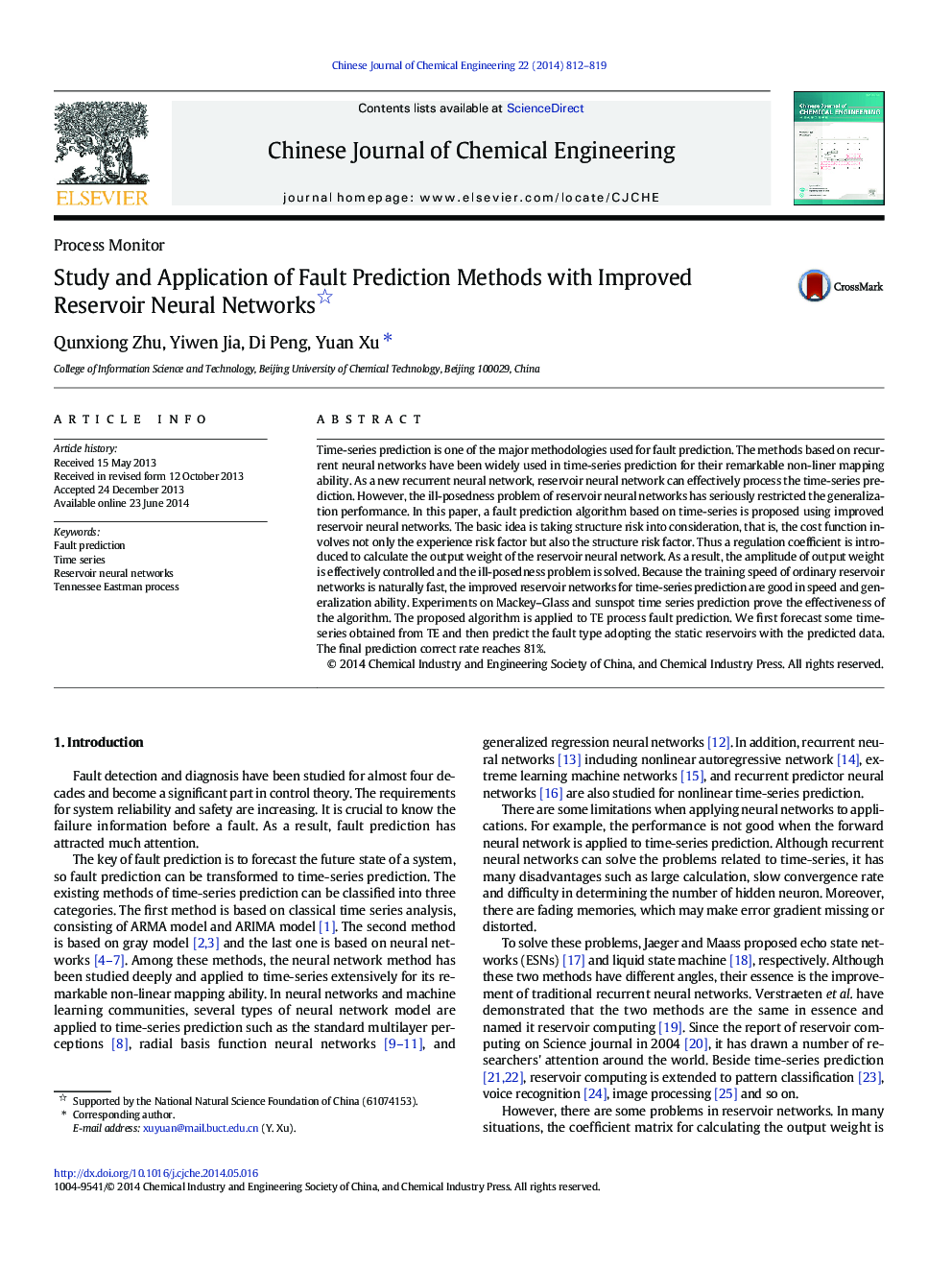| کد مقاله | کد نشریه | سال انتشار | مقاله انگلیسی | نسخه تمام متن |
|---|---|---|---|---|
| 166011 | 1423409 | 2014 | 8 صفحه PDF | دانلود رایگان |
Time-series prediction is one of the major methodologies used for fault prediction. The methods based on recurrent neural networks have been widely used in time-series prediction for their remarkable non-liner mapping ability. As a new recurrent neural network, reservoir neural network can effectively process the time-series prediction. However, the ill-posedness problem of reservoir neural networks has seriously restricted the generalization performance. In this paper, a fault prediction algorithm based on time-series is proposed using improved reservoir neural networks. The basic idea is taking structure risk into consideration, that is, the cost function involves not only the experience risk factor but also the structure risk factor. Thus a regulation coefficient is introduced to calculate the output weight of the reservoir neural network. As a result, the amplitude of output weight is effectively controlled and the ill-posedness problem is solved. Because the training speed of ordinary reservoir networks is naturally fast, the improved reservoir networks for time-series prediction are good in speed and generalization ability. Experiments on Mackey–Glass and sunspot time series prediction prove the effectiveness of the algorithm. The proposed algorithm is applied to TE process fault prediction. We first forecast some time-series obtained from TE and then predict the fault type adopting the static reservoirs with the predicted data. The final prediction correct rate reaches 81%.
In order to facilitate the study, we redraw a new picture of the network structure in this figure, which is essentially the same as the structure of reservoir neural networks, with the same neuron of reservoir in different moment. Win is the connection weight between the input layer and the reservoir, W is the interval connection weight, and Wout is the connection weight between the output layer and the reservoir. Training the reservoir networks can be summarized as determining the connection weight matrix Wout between the output layer and the dynamic reservoir layer.Figure optionsDownload as PowerPoint slide
Journal: Chinese Journal of Chemical Engineering - Volume 22, Issue 7, July 2014, Pages 812–819
